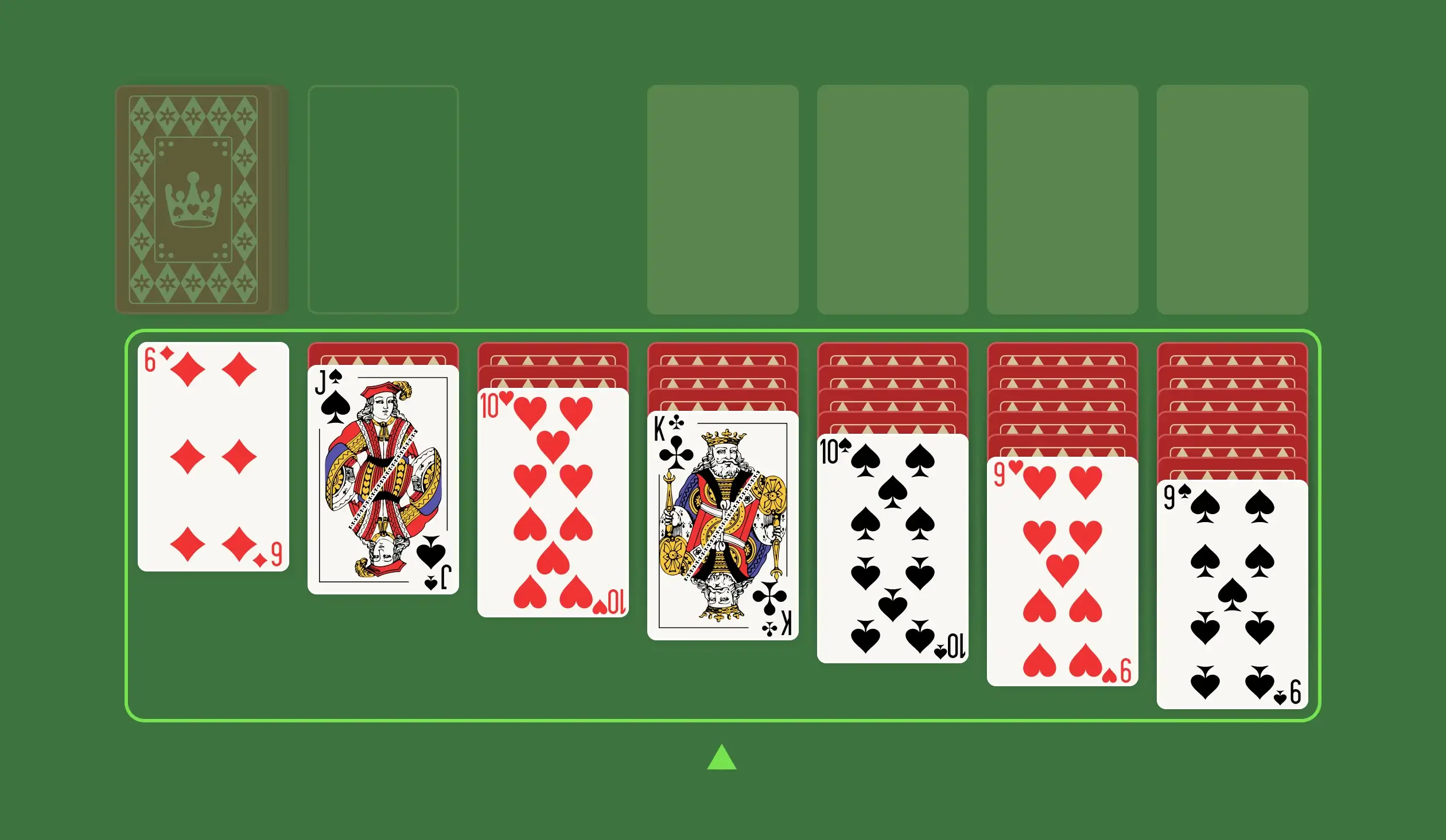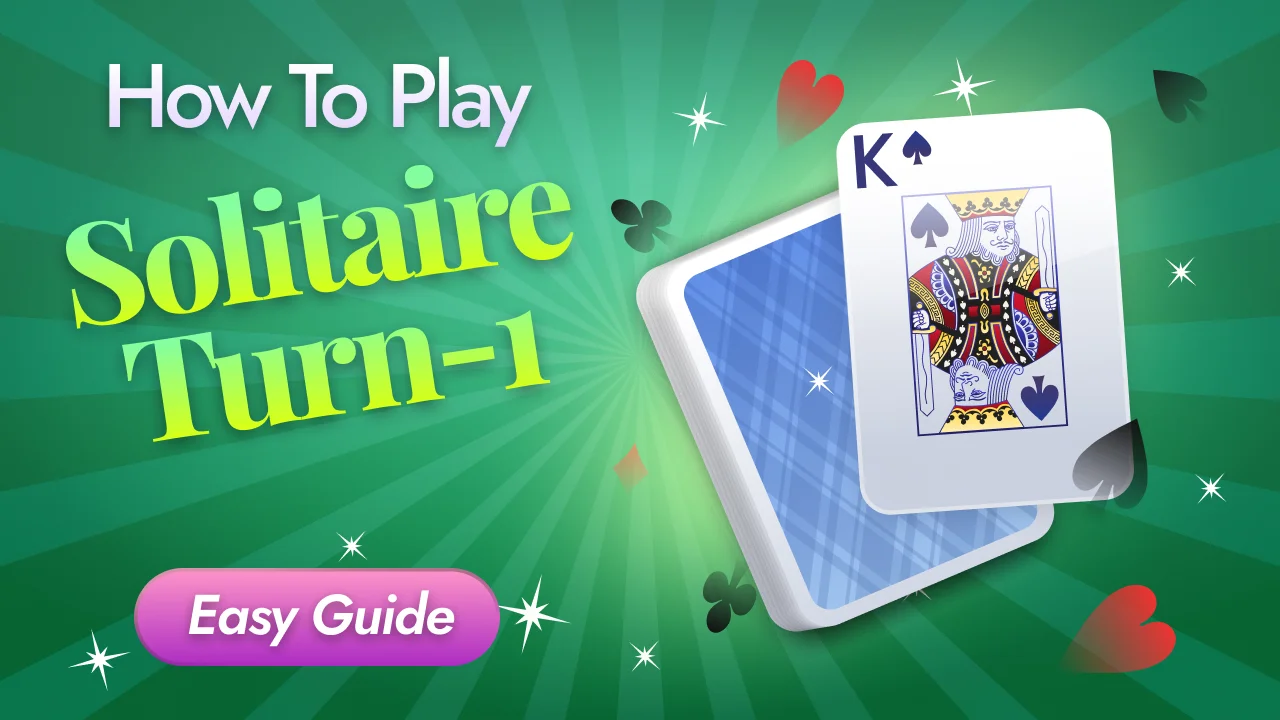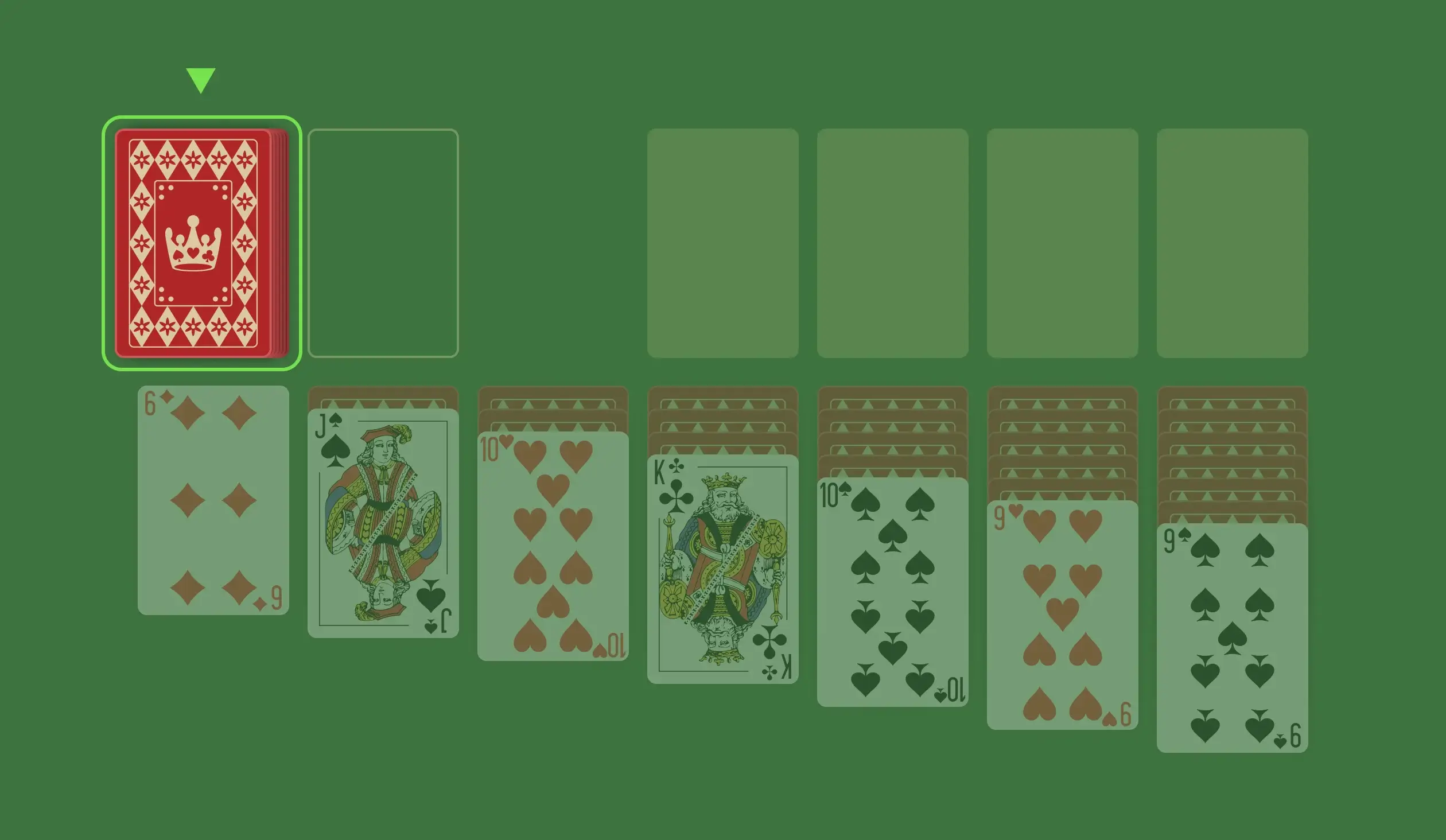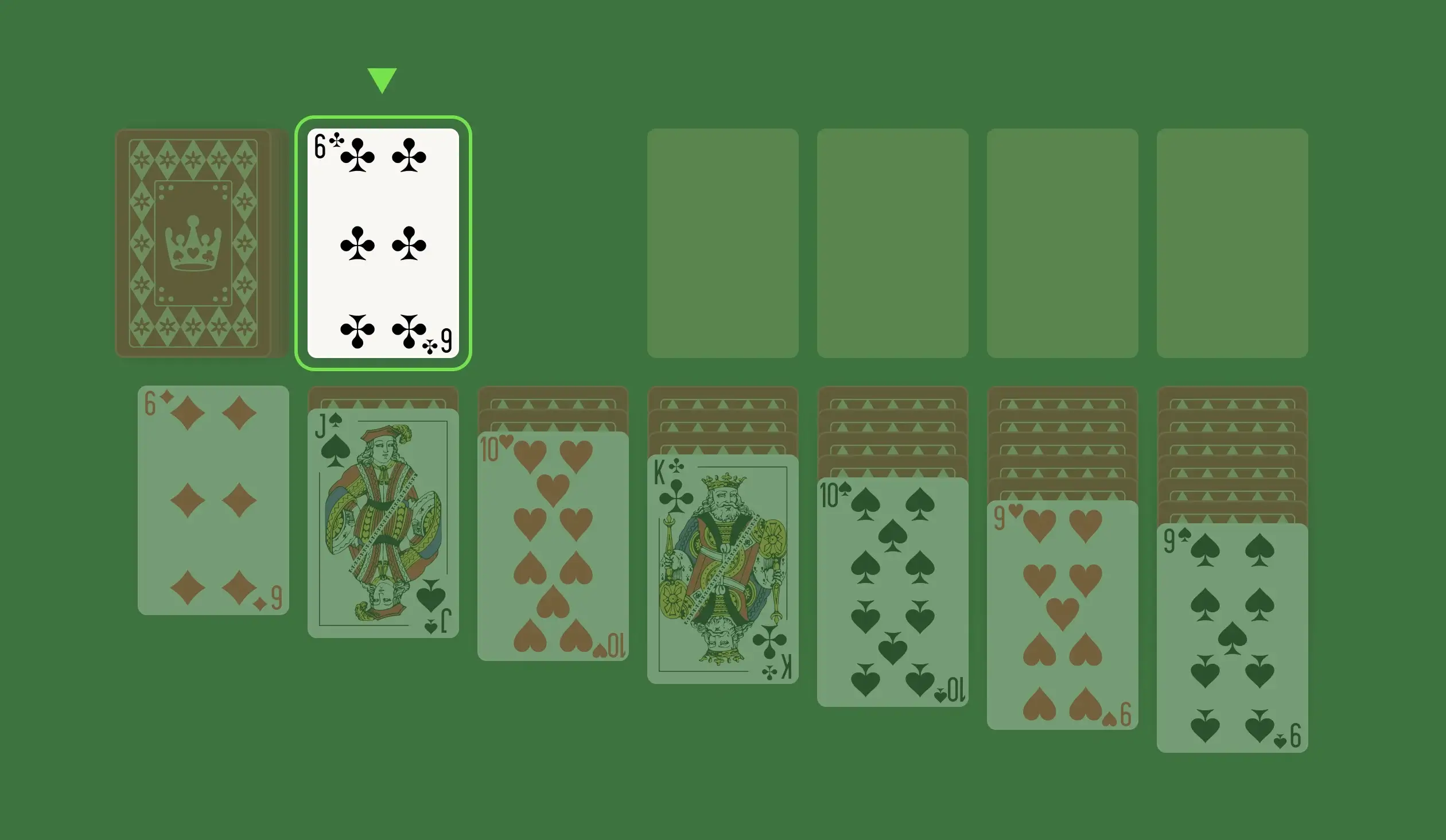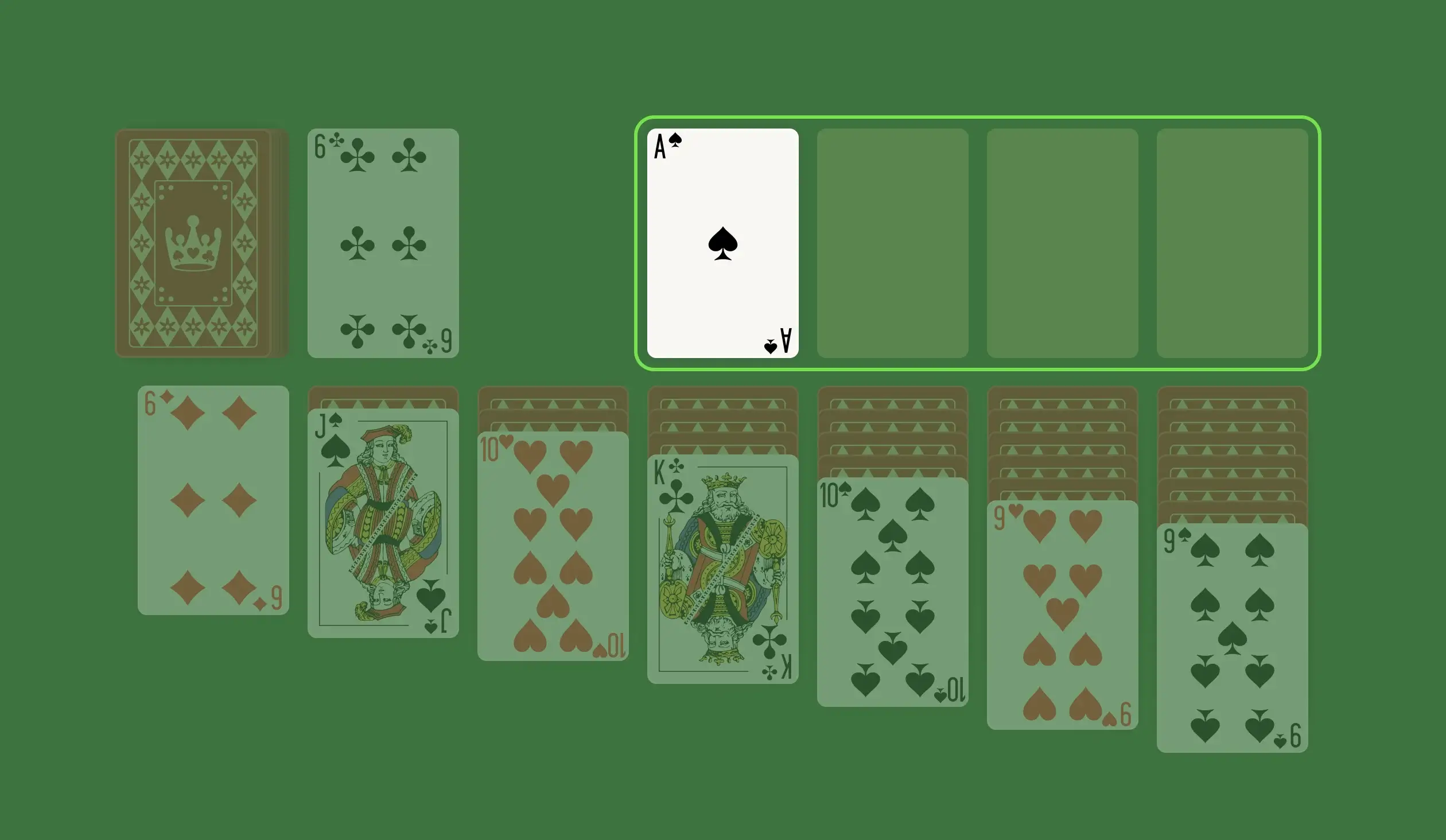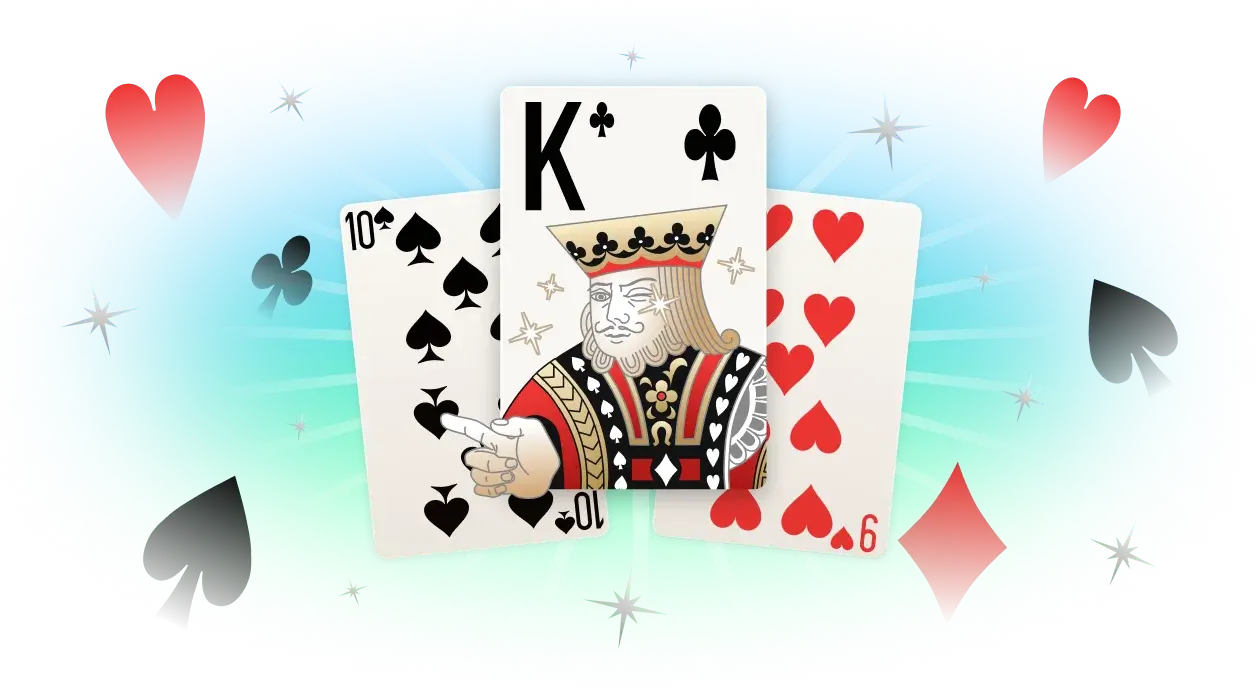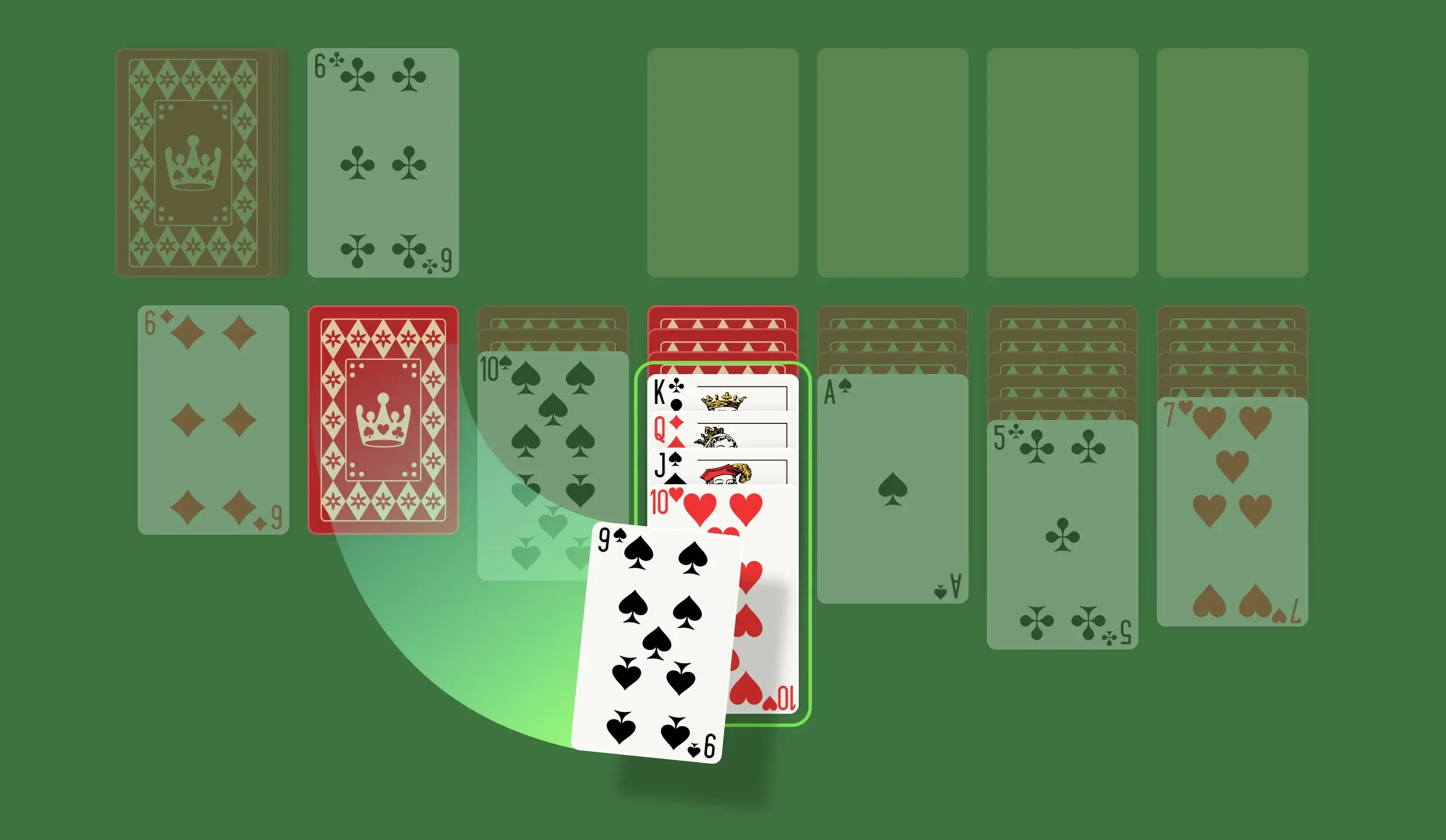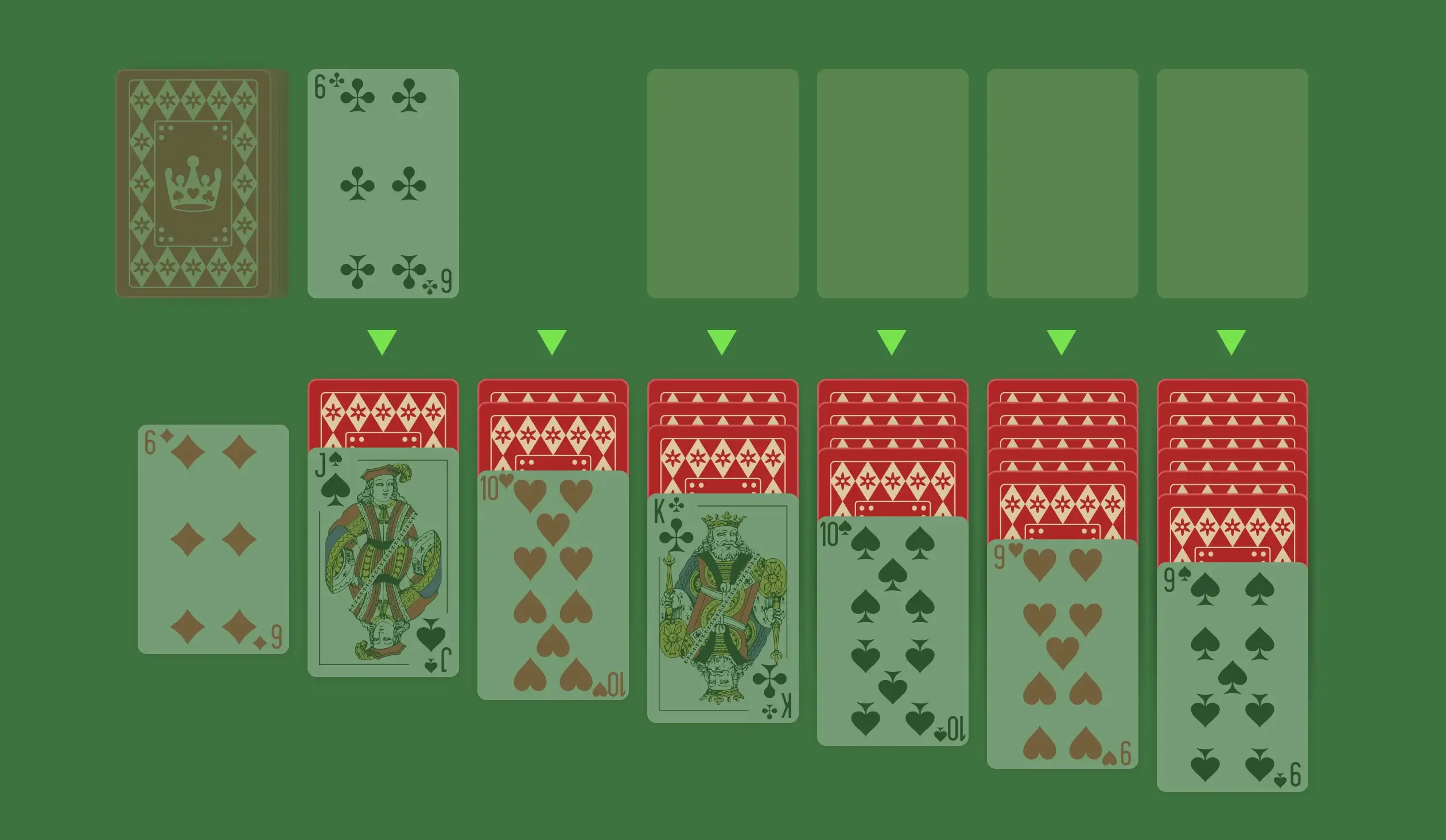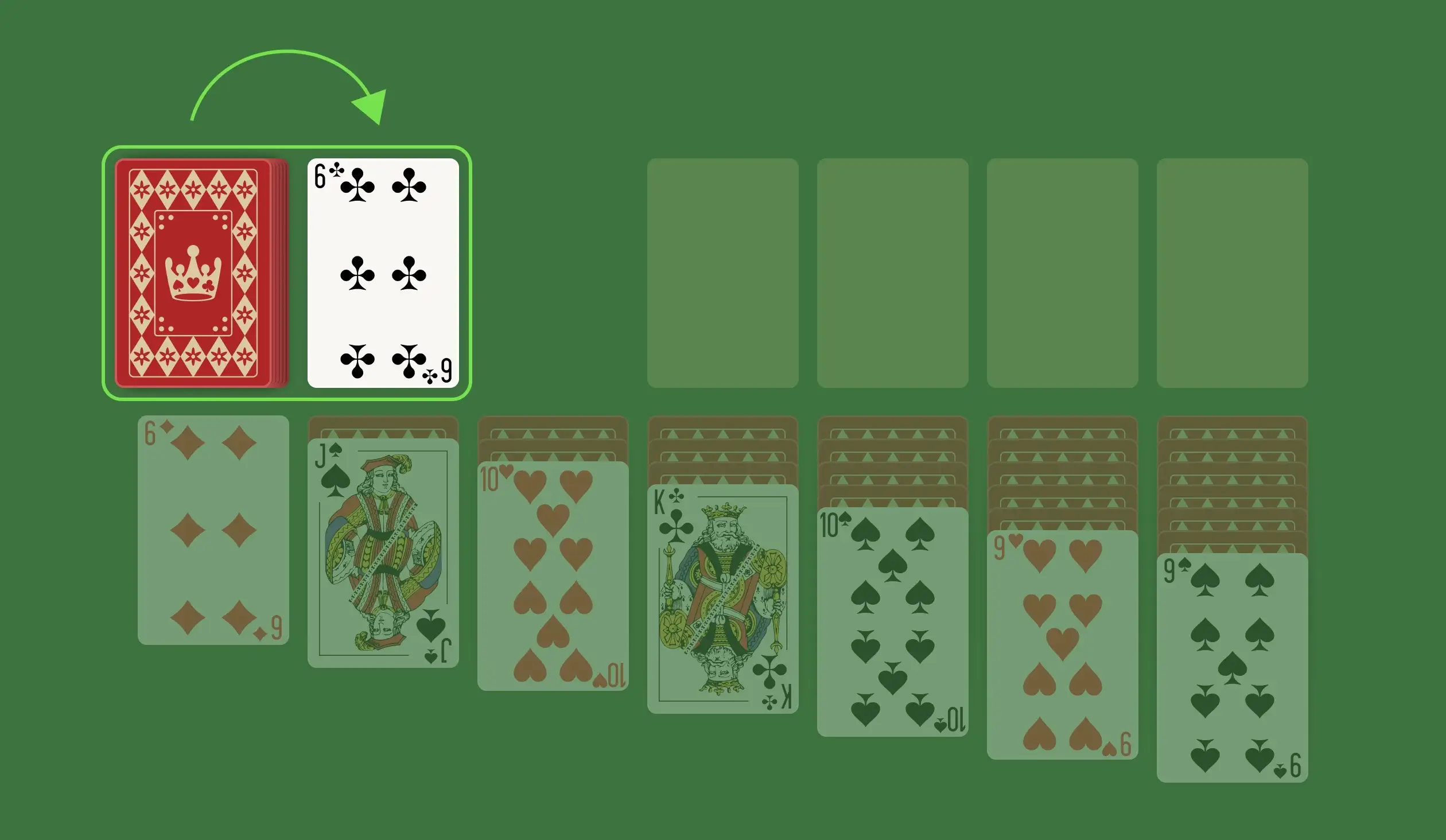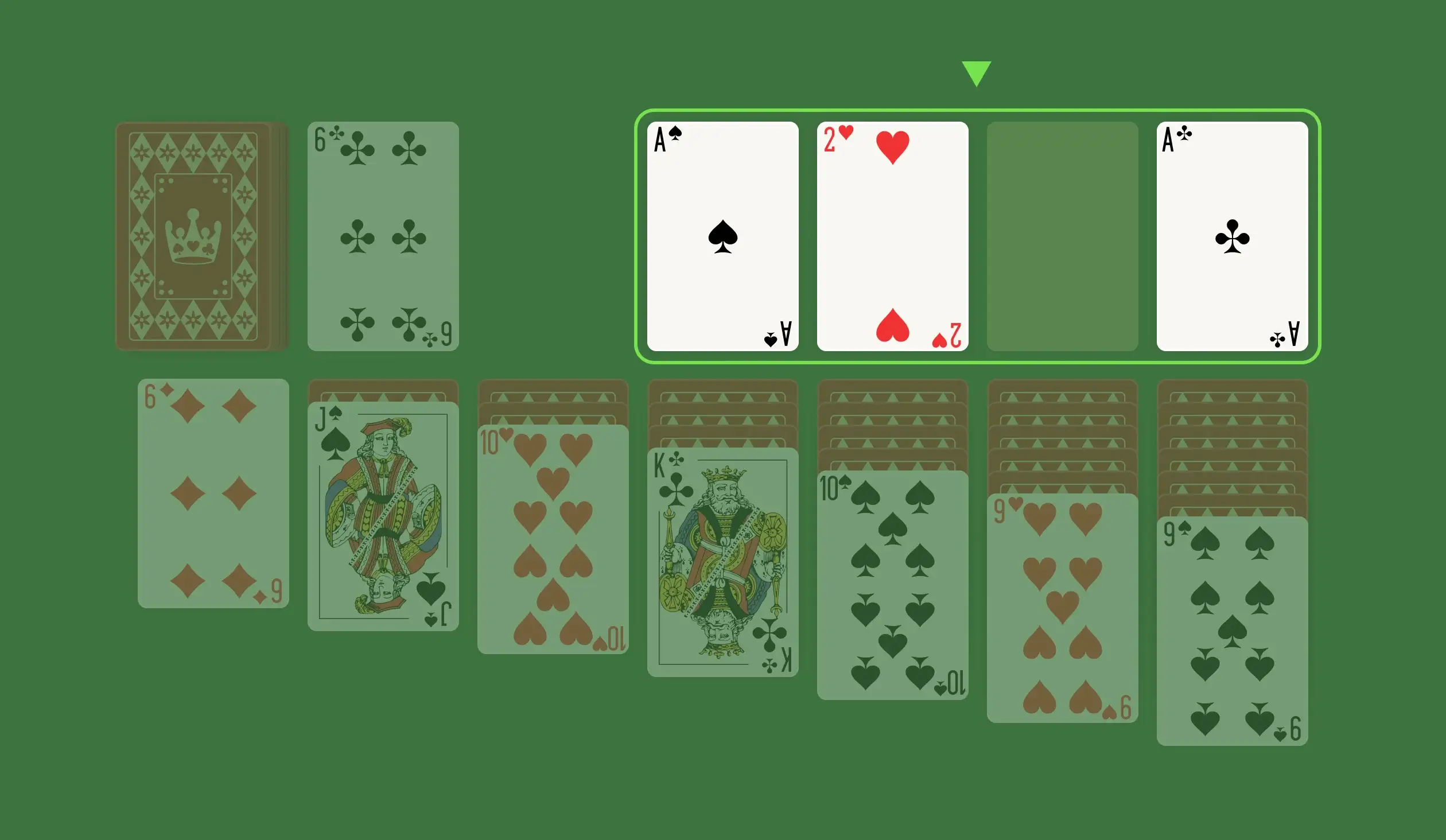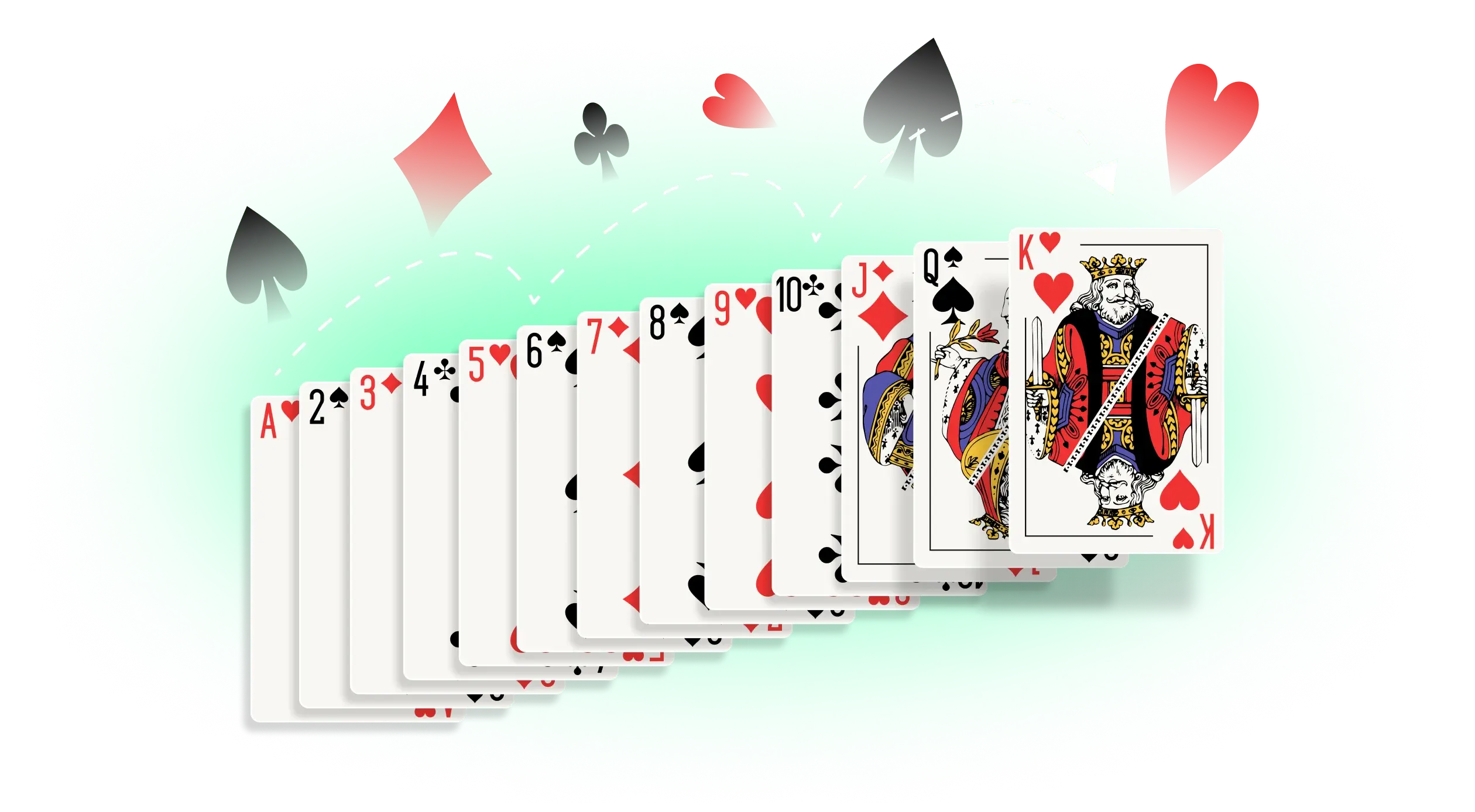1.The Tableau
The Tableau consists of 28 cards drawn randomly from the deck and arranged into seven columns. The number of cards in each column increases from left to right, with the first column having one card, the second column having two cards, the third having three, and so on. Only the top card in each column is face-up and available for play.
